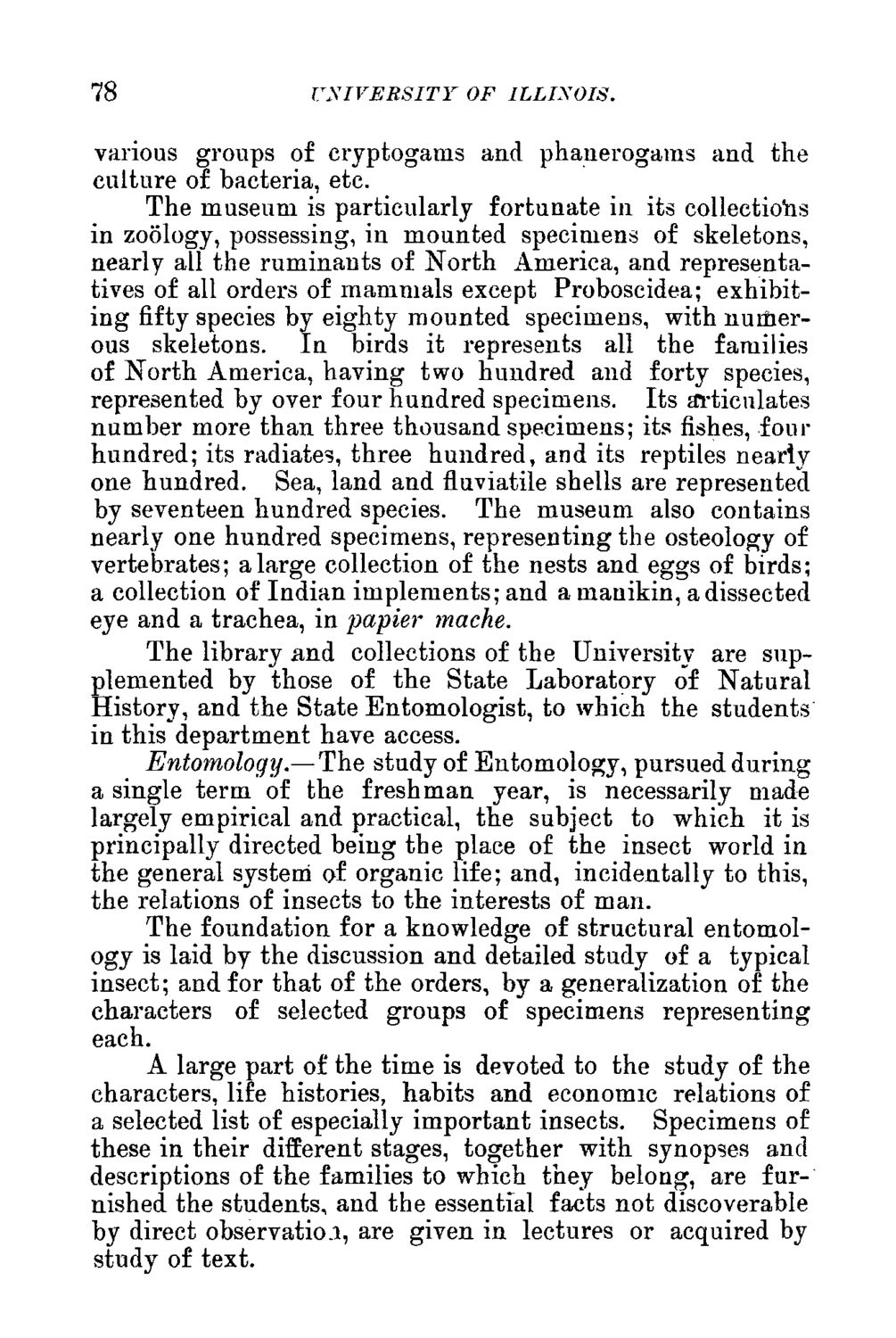| |
| |
Caption: Course Catalog - 1888-1889
This is a reduced-resolution page image for fast online browsing.

EXTRACTED TEXT FROM PAGE:
78 UNIVERSITY OF ILLINOIS. various groups of cryptogams and phanerogams and the culture of bacteria, etc. The museum is particularly fortunate in its collectiohs in zoology, possessing, in mounted specimens of skeletons, nearly all the ruminants of North America, and representatives of all orders of mammals except Proboscidea; exhibiting fifty species by eighty mounted specimens, with numerous skeletons. In birds it represents all the families of North America, having two hundred and forty species, represented by over four hundred specimens. Its articulates number more than three thousand specimens; its fishes, four hundred; its radiates, three hundred, and its reptiles nearly one hundred. Sea, land and fluviatile shells are represented by seventeen hundred species. The museum also contains nearly one hundred specimens, representing the osteology of vertebrates; alarge collection of the nests and eggs of birds; a collection of Indian implements; and a manikin, a dissected eye and a trachea, in papier mache. The library and collections of the University are supplemented by those of the State Laboratory of Natural History, and the State Entomologist, to which the students in this department have access. Entomology.— The study of Entomology, pursued during a single term of the freshman year, is necessarily made largely empirical and practical, the subject to which it is principally directed being the place of the insect world in the general system of organic life; and, incidentally to this, the relations of insects to the interests of man. The foundation for a knowledge of structural entomology is laid by the discussion and detailed study of a typical insect; and for that of the orders, by a generalization of the characters of selected groups of specimens representing each. A large part of the time is devoted to the study of the characters, life histories, habits and economic relations of a selected list of especially important insects. Specimens of these in their different stages, together with synopses and descriptions of the families to which they belong, are furnished the students, and the essential facts not discoverable by direct observation, are given in lectures or acquired by study of text.
| |